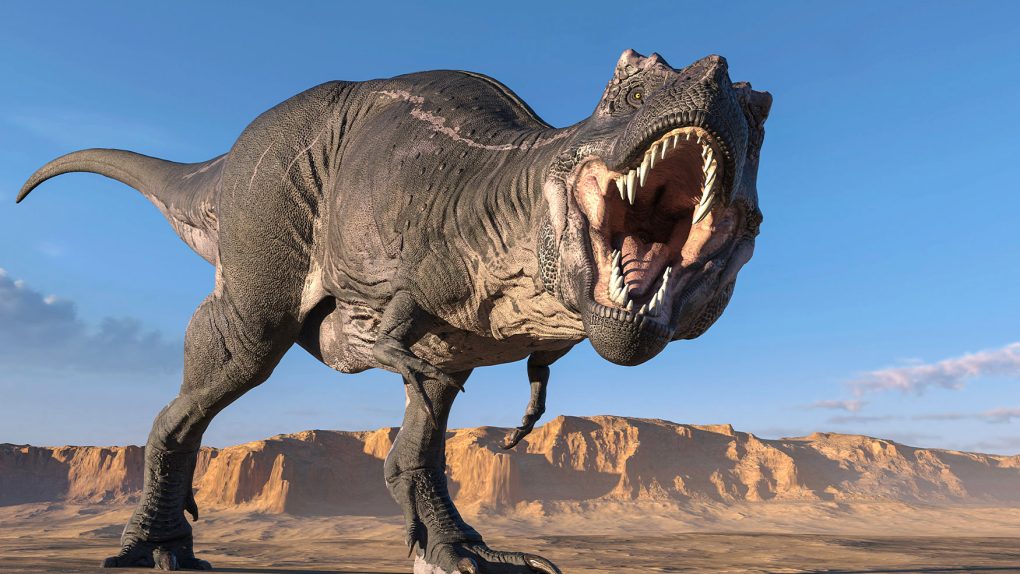Remember that scene in Jurassic Park where the Tyrannosaurus rex chases down a Jeep? The vehicle was moving quite fast but the massive beast was able to catch right up to it thanks to its massive strides. The movie was a work of fiction, but while it managed to get a lot of things right about the dinosaurs it depicted, the speed of the most fearsome dinosaur in the film was definitely not one of them.
Previous research has put the estimated top sprint speed of a Tyrannosaurus rex somewhere in the neighborhood of 15 to 25 miles per hour. That’s not exactly breaking the sound barrier but it might have been enough to help the creature catch slower prey. That being said, the sprint speed of an animal is often nowhere near the walking speed, and the same appears to be true here, as new research has estimated the walking speed of the T. rex to be as low as just 2.9 mph.
According to the study, which was published in Royal Society Open Science, the Tyrannosaurus rex’s walking speed can be calculated by accurately simulating the movement of its massive tail. The animal’s tail made up a huge portion of its body mass and was filled with muscle that helped it balance on two legs. By making a few reasonable assumptions about the makeup and musculature of the T. rex tail, the researchers were able to simulate its swaying frequency and, as a result, draw some pretty solid conclusions about how fast the creature walked when it wasn’t in a hurry.
Using computer simulations to show their work the researchers provide a look at how the T. rex likely walked. As you can see, it’s an incredibly slow and casual gait. This isn’t how you probably imagine a deadly carnivore moving about, but when you consider the animal’s size it makes sense that it would want to conserve as much energy as possible when it didn’t need to be speedy.
It’s interesting to see one of the most iconic dinosaurs depicted in such a casual way, but based on the researchers’ findings, this is likely how the animal traveled when it didn’t have anywhere important to be. A mere 2.9 miles per hour is actually slower than most adult humans walk, so while it could have bit you in half if it wanted to, chances are you would beat the Tyrannosaurus rex in a walking race.
Of course, all of this is based on assumptions about the animal that we have no way of proving were true. Muscle and other soft tissue don’t turn into fossils like bone. Everything we think we know about the anatomy of these massive ancient creatures is based on what little we can glean from fossil findings mixed with educated guesses.








